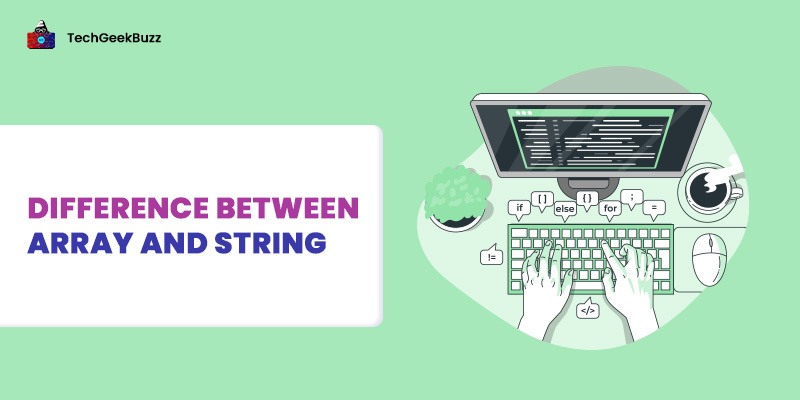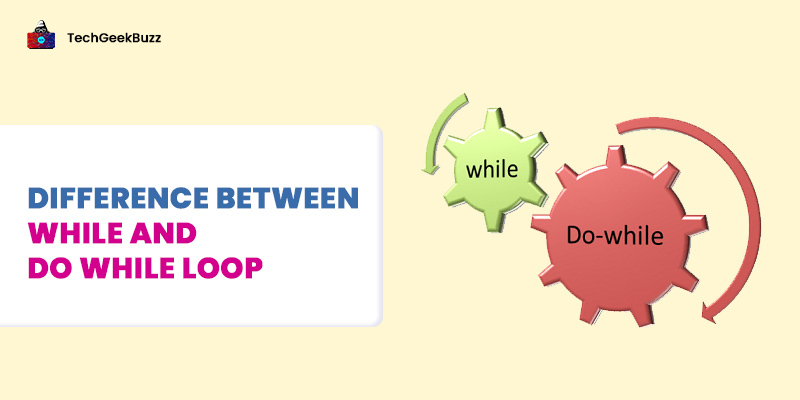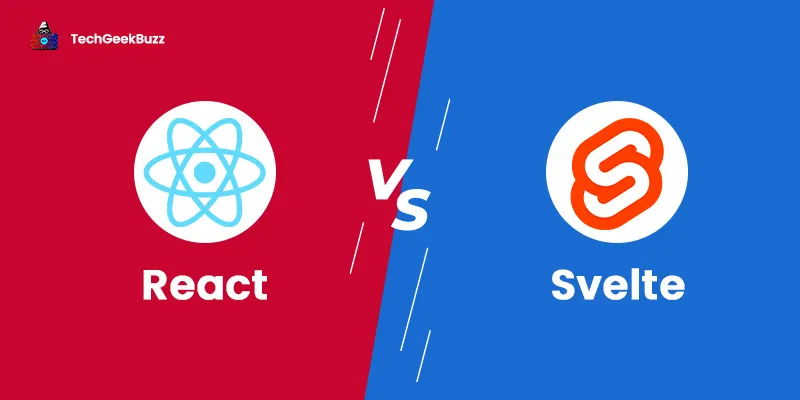Many programming languages, such as C, C++, Java, etc., support an array and a string. While an array is generally considered a data structure, a string is basically a data type. They differ from each other based on their ability to store different types of data. The major difference between array and string is:
While a string stores a series of characters, an array is a collection of multiple items/elements of the same data type, be it an integer, string, or any other data type.
If you are a noob programmer, you definitely need to know the difference between array and string. In this article, I will walk you through the detailed differences between an array and a string and explain each data structure separately.
Difference Between Array and String - A Head-to-Head Comparison
The following table highlights the difference between array and string:
|
Array |
String |
|
An array is a collection of multiple data items of the same type in contiguous memory locations. |
A string is a sequence of characters (letters, digits, spaces, and symbols) stored in contiguous memory locations. |
|
It is mutable, i.e., you can change the values of the array even after its initialization. |
It is immutable, i.e., you cannot change the sequence of characters once initialized. |
|
The size of an array is not dynamic. It is fixed and needs to be specified at the time of declaration. |
The size of a string is dynamic. It can grow and shrink, i.e., you can add more characters and remove the existing ones as required. |
|
An array can store data elements of different types, such as int, char, string, etc. |
A string can only store elements with the char data type. |
|
It is primarily used to store a huge collection of data of the same type. |
It is primarily used for managing and representing textual data. |
What is an Array?
An array is a collection of multiple data items or elements of the same data type. For instance, a single array can store multiple elements of the int data type.
All the data items in an array share a single variable. They are stored at contiguous memory locations.
A contiguous memory is a continuous block of memory wherein each data element is stored side by side without any fragmentation or gaps.
The contiguous memory layout results in faster and more efficient access to data elements in an array. Each element has an index number through which you can access it. Also, the index number of an element represents its position in the array.
The primary use of an array is to store large amounts of data of the same data type. Let us understand this with a simple real-world example.
Consider that you want to store runs made by a cricketer in 5 matches of an inning. Without an array, you need to declare a different variable for runs scored in each match. However, with an array, you can simply use a single variable to store the runs scored in all 5 matches.
Read about arrays in detail: What are Arrays?
Syntax:
C and C++
data_type array_name [size];
data_type array_name [size] = {element1, element2, element3, ...};
Java
data_type array_name = new data_type[size];
data_type array_name = {element1, element2, element3, ...};
Python
Python does not have built-in arrays. Instead, it uses the list to store multiple items. However, one major difference between an array and a list is that the list can store data items of different types.
variable_name = [element1, element2, element3, ...]
Features
- An array can be one-dimensional, two-dimensional, or multi-dimensional.
- Arrays are mutable, i.e., they support changing content (values or data items) even after declaration.
- The index of an array starts at 0.
- While declaring an array, you need to define its size.
Advantages
- Arrays ensure maximum efficiency in accessing and retrieving data elements.
- An index number makes it easy to search for or access any elements in an array.
- You can access any element directly with its index number.
- An array offers a simple and efficient way to organize data of the same type.
- It is a versatile data structure, as it can store data of various types.
- Many programming languages support the array data structure.
Disadvantages
- An array does not support complex data structures, such as structures and objects.
- The size of an array is fixed at the time of initialization.
- It is less flexible than lists and linked lists due to its fixed size.
- If the array is not fully populated, the memory allocated to it may be wasted.
What is a String?
A string is a sequence of multiple characters stored at contiguous memory locations. Here, characters include letters, digits, symbols, and spaces. A string is terminated by a special character “\0” (null character).
The primary use of a string is to represent and manipulate any text or character sequences. It is also helpful in processing the input, parsing data, storing and displaying text, and working with textual information.
Many programming languages, including C, C++, Java, Python, etc., support the string data structure. Also, some programming languages provide built-in functions to manipulate strings.
Syntax:
C
char variable_name[] = "text";
C++
string variable_name = "text";
Python
variable_name = "text"
Java
String variable_name = "text";
Features
- A string is immutable, i.e., you cannot change its content (characters) once declared.
- It is an ordered collection or sequence of characters.
- You can access an individual character from a string.
- It is possible to merge or concatenate two different strings.
- You can compare two strings to determine their relativity.
Advantages
- The string is the most fundamental data type that almost every programming language supports.
- Many programming languages offer built-in functions and modules to manipulate strings.
- It is a versatile data type, as it supports letters, digits, symbols, and spaces.
- It represents data in a human-readable format.
Disadvantages
- Strings are immutable; they cannot be changed once created.
- String concatenation can be a slow process because it creates a new string and copies the content of old strings into a new one.
- Accessing each character from a string can be less efficient than other data structures, like an array.
Array vs String - Example
Array Example
Here is a simple example of declaring and initializing an array and displaying its elements.
#include<iostream>
using namespace std;
int main()
{
// Creating an array of integers
int numArray[5] = {34, 56, 78, 34, 56};
int i;
// Accessing and printing elements in the array
for(i=0; i<5; i++)
{
cout<<numArray[i]<<endl;
}
return0;
}
Output
34
56
78
34
56
String Example
#include <iostream>
#include <string>
using namespace std;
int main()
{
// Creating a string
string greeting = "Welcome to TechGeekBuzz!";
// Accessing and printing the string
cout << greeting;
return0;
}
Output
Welcome to TechGeekBuzz!
Conclusion
This was all about the difference between array and string. An array holds multiple data items of the same type, whereas a string holds a sequence of characters only. While the array is the most fundamental data structure, the string is a universal data type. The array can hold multiple elements of the string data type.
I hope this article has helped you understand how to create and initialize arrays and strings and their major differences.
People are also reading:





Leave a Comment on this Post